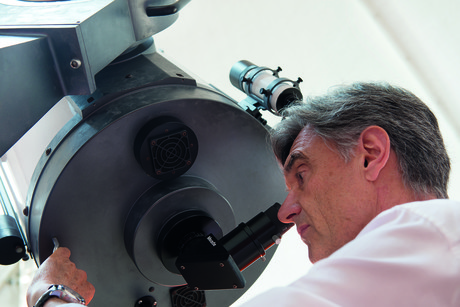The ancient star that faked its age

We’ve all had that moment where we’ve believed a movie star to be around a certain age, only to later find out that they’re actually much older. This was recently the case for scientists at Ruhr-Universität Bochum (RUB), who were investigating the true age of a very different kind of star.
49 Lib, a relatively bright star in the southern sky, was until recently believed to be 2.3 billion years old, or half as old as Earth’s Sun. Scientists have now proved this theory incorrect, finding that the star was in fact formed 12 billion years ago at the same time as the Milky Way. Researchers led by Dr Klaus Fuhrmann and Professor Rolf Chini (pictured) have now revealed the reason behind scientists’ decades-long assumption of the star’s age, publishing their study in the Astrophysical Journal.
Scientists determine the age of stars based on their chemical composition. Old stars that had been formed during an early stage of the universe do not contain any heavy elements; this is because those elements were generated later, following the nuclear fusion of many generations of stars. 49 Lib does contain heavy elements, which led researchers to believe that it was a relatively young celestial body.
However, it was discovered in 2016 that 49 Lib is part of a dual star system, its partner being an almost extinguished star that is as good as invisible. At the end of its life, as the partner star expanded, its matter would have escaped into space and been attracted by the gravity of the neighbouring 39 Lib, which would have absorbed it. And what did that expelled matter include? Heavy elements, of course!
The RUB researchers were further able to determine the age of 49 Lib based on its spectra, breaking the light emitted by the star into its individual components and decoding the wavelength at which the star emits the most light. This method enabled the team to track the dual system’s entire evolution: they now know, for example, the masses with which the star’s life had begun and how those masses have evolved since then.
The researchers revealed that both 49 Lib and its partner would have initially had similar mass properties as the Sun. When 49 Lib took over the matter of its extinguishing partner, it gained a weight of approximately 0.55 solar masses. The more mass, the shorter the star’s lifespan. The weight gain has thus reduced 49 Lib’s lifespan dramatically, with Professor Chini stating that the star will soon become a red giant.
As a red giant, 49 Lib will no longer be able to keep its matter together, undergoing the same process that its partner underwent as it turned into a white dwarf. Furthermore, part of the matter of 49 Lib will be attracted by its extinguishing star partner, thus returning it from whence it came. “If that partner cannot rid itself of the matter in small eruptions, it will fully explode as a supernova,” explained Professor Chini.
How light helps plants survive in harsh environments
Researchers from National Taiwan University have uncovered how light stabilises a key...
SKA-Low's first image of the universe released
The image is an indication of the scientific revelations that will be possible with the...
Which blood test is best at monitoring ALS?
A new study compares three types of blood biomarkers: neurofilament light chain proteins, glial...




